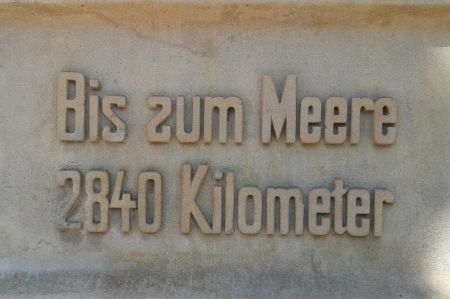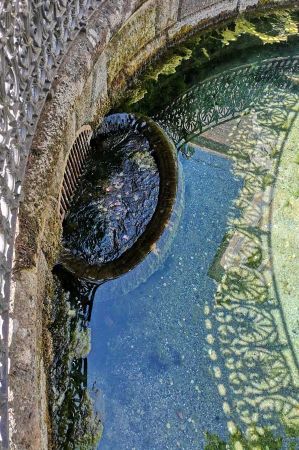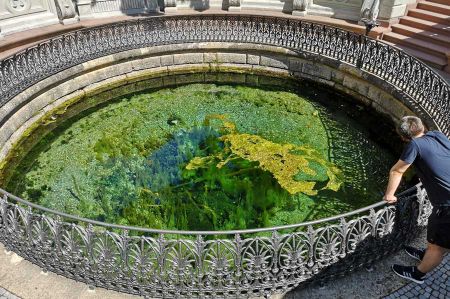Danube spring or Danube creek in Donaueschingen
- Written by Portal Editor
Since the settlement of man, sources of water have played a significant role in supplying human settlements with fresh water.
No wonder, then, that just by their size or by their location at the beginning of a significant river, they had a mythological significance too, as is evidenced in numerous spring sanctuaries or in the worship of spring nymphs. This was the case with the source of the mightiest river in the former Roman Empire, at least that is how Tacitus describes it. The Danube emanates from the soft, gently elevated ridges of the Abnoba Mountains and the Romans seem to have seen the origin under the care of the goddess of the mountain forest Abnoba, as a source and river deity.

According to today's general scientific opinion, the Danube is formed a little east of Donaueschingen by the confluence of the two source rivers Brigach and Breg. A well-known motto of the region is: Brigach and Breg bring the Danube along. However, the source of the Danube has at least two real sources; symbolically those of the Danube creek in Donaueschingen and hydrologically those of the larger source river Breg at the Martin's Chapel near Furtwangen.
The source of the Danube creek in Donaueschingen

The Danube creek rises in the Princely Fürstenberg castle garden in Donaueschingen at a corner of the castle in an artistically composed karst-spring-source, not, as perhaps suspected, somewhere in the free, idyllic nature. Of course, such a well-known river origin also belongs structurally to an area. However, the water immediately disappears underground again to flow into an underground run in the Brigach after about 100 meters, which about 1.4 km further combines with the Breg to the Danube. The source of the Danube River is just one of 22 sources in the vicinity of the confluence, which feed on above seeped water of the Danube spring rivers and leachate precipitation of the karst limestone hilly country of the Baar and pour together between 400 and 1000 l / s of water.
At least since the 15th century, the Danube source is considered the source of the Danube (Hartmann Schedel in his World Chronicle of 1493); but there are also indications that this was already seen like that at Roman times (Pliny the Elder in Naturalis Historia), where it was on the edge of the permanently populated area. In the oldest cartographic representation from the year 1538 by Sebastian Münster, the Danube creek spring with its at that time rectangular, approximately 8 × 6 m measuring source basin is recorded in signature paper.
Hydrological significance of the source of the Danube
In contrast to the mythological role, the hydrological importance of the Danube springs is unusually low, since the Danube above and below Tuttlingen loses such a significant part of its water to the Rhine system that it completely dries most of the year, the so-called Danube sinking at Ulm - viewed from the point of view of the hydrology - to the tributary of the much waterier Iller and finally in Passau also surpassed by the Inn.
No matter, and anyway, we had seen the spring basin of the Danube creek, then wandered through the beautiful parkland of the Fürstenberg Palace Gardens, could watch a gray heron fishing and enjoy the fresh air in the park. What do we want more.
Please read as well:
Rottweil - Kinzigtal Street and Dominican Museum
Rottweil colorful - a city also relies on guild signs
